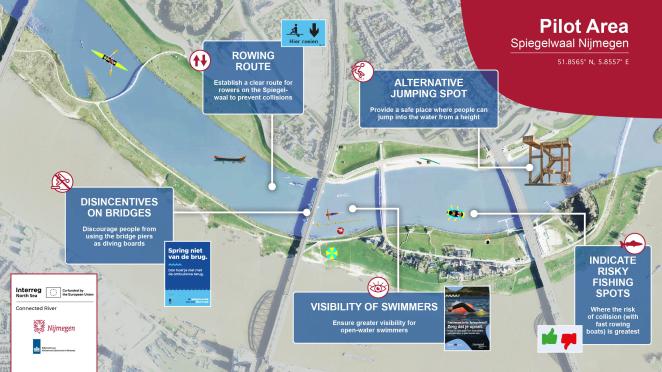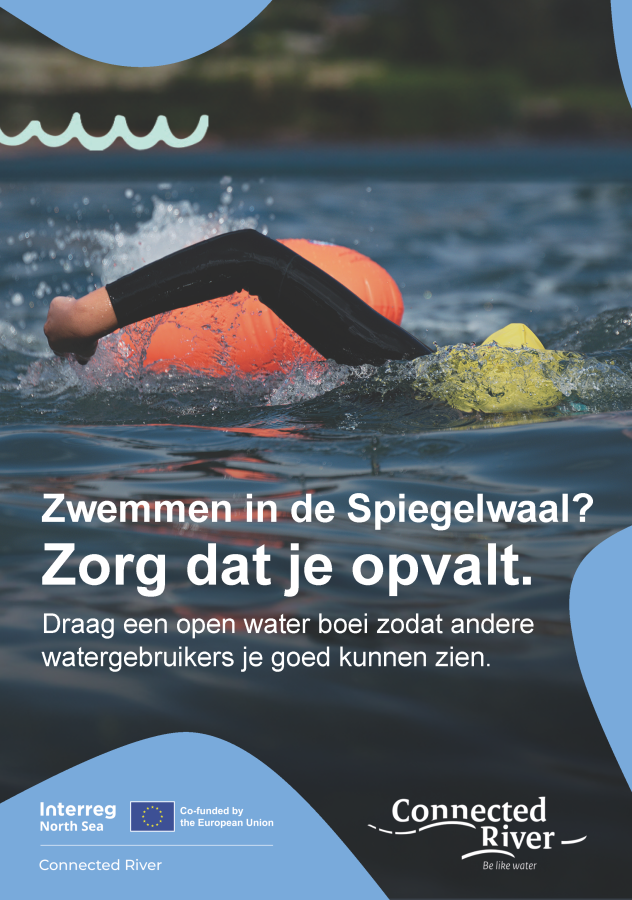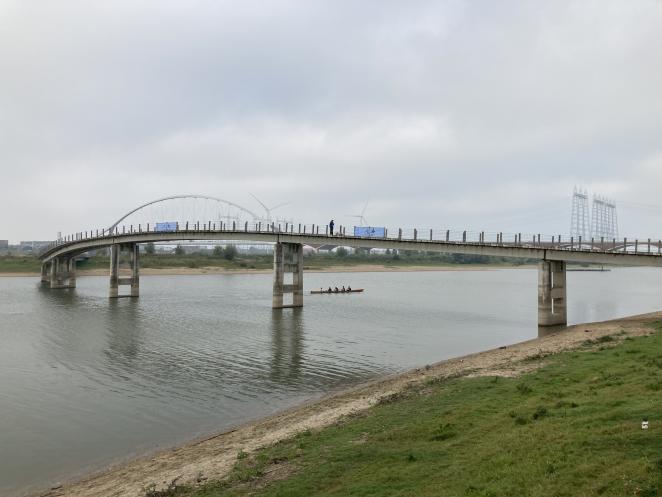The Spiegelwaal in Nijmegen was created to achieve safe water levels to prevent flooding in combination with meeting water quality standards. It has since then become a bustling hub for water recreation - especially on sunny days! And when it gets really hot, people often cool off by taking a swim in this secondary channel. 🌊

Enhancing Safety at the Spiegelwaal
That was the focus of last year's experiments carried out in the Spiegelwaal pilot area in Nijmegen. In the infographic you can see what has been done so far.
Rowing Route Visibility: We made the rowing route visible on the Spiegelwaal. This way, other water users can clearly see which lane the rowers are using. Rowers can also quickly identify which bridge arch to pass through, helping to avoid collisions.
Signs with Delighters: Using nudges, we’re discouraging people from using bridge pillars as jump-platforms for fun. This helps prevent dangerous collisions with water sports enthusiasts.
Visibility of Swimmers: We encouraged open-water swimmers to make themselves more visible when swimming in the Spiegelwaal, ensuring they can be seen more easily by other water users.
Marking Risky Fishing Spots: We communicated with anglers about areas where the risk of collisions with (fast) rowing boats is highest. This helps them take precautions when fishing.
Alternative Diving Spot: We conducted an experiment to test the desirability of an alternative jumping spot. In the coming period, we will need to carry out further experiments to determine if we can actually create such a spot.

Poster: Don’t jump off the bridge. That way, you won’t need a ride back in an ambulance.
Experiment #1 - Poster
Spiegelwaal is a popular spot for swimmers seeking to push their limits and enjoy nature. However, the very elements that make the Spiegelwaal attractive for swimming also pose significant risks. One of the primary concerns is the visibility of swimmers, which is crucial for preventing accidents.
People swimming long distances in the Spiegelwaal are not easily visible. Therefore, we want to encourage swimmers to make themselves more visible by using a swim buoy. This poster has been created to remind swimmers of this. We hope that this way, swimmers will be more visible, and as a result, fewer accidents will occur.

Sign: Don’t jump off the bridge. That way, you won’t need a ride back in an ambulance.
Experiment #2 - Sign
It has also become apparent that younger people find it an attractive spot to seek adrenaline by jumping off one of the bridges above the Spiegelwaal. However, this can lead to very dangerous situations.
As part of the Connected River initiative, several signs have been placed around the Spiegelwaal to discourage people from jumping off the bridges.

Experiment #3 - Banner
Over the past six months, two user meetings have taken place to discuss safety on the Spiegelwaal. These meetings included various stakeholders and users who regularly make use of the Spiegelwaal, such as rowers, swimmers, anglers, windsurfers, canoeists, paddleboarders, and the lifeguard services. A recurring topic during these discussions was the lack of clarity regarding how each group uses the water.
One way we aim to improve both clarity and, ultimately, safety on the Spiegelwaal is by making the rowing route visible to other water users! We have installed banners on two bridges so that rowers, when looking behind them as they row, can immediately see through which bridge arch they should pass. This is especially useful for beginner rowers in September but will also benefit all other water users. They will now have a clearer idea of where rowing at speed is taking place, allowing them to adjust accordingly.
This pilot started om September 19th and will run for two months. Afterward, we will evaluate the results with the two rowing clubs and other water users to see how it has been received.
Source: Municipality of Nijmegen
